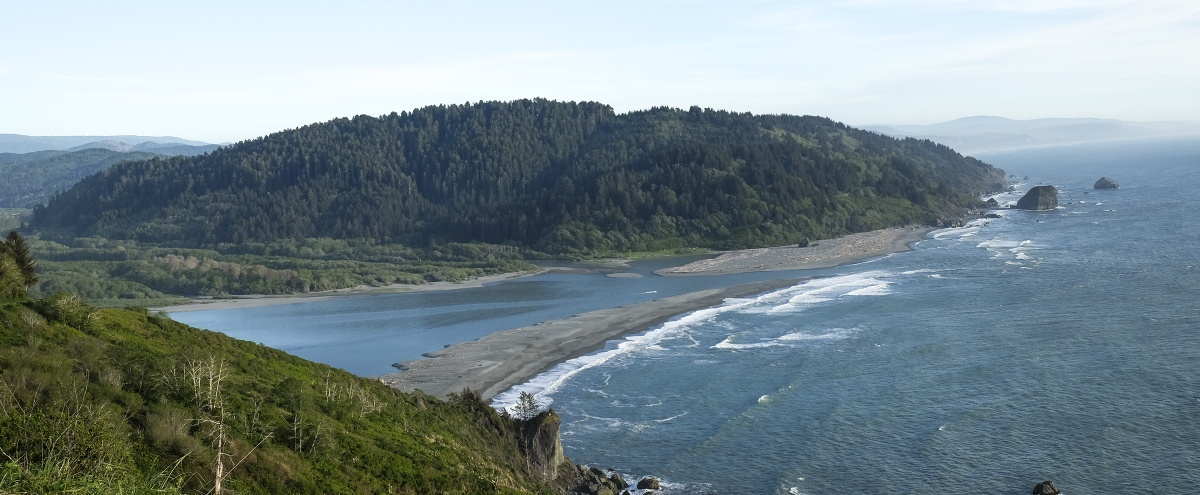While the British Columbia government is pushing ahead with the much-reviled Site C dam, across the border in Oregon and California, they’re removing them.
In one of the largest river restoration efforts in the U.S., nation, state and federal officials signed an agreement Wednesday expected to remove four hydroelectric dams on the Klamath River by 2020.
The new agreement acknowledges that additional work is necessary to fully restore the Klamath Basin, advance the recovery of its fisheries, uphold trust responsibilities to the area’s tribes, and sustain the region’s farming and ranching economy.
The Klamath River flows 263 miles through Oregon and northern California and drains into the Pacific Ocean.
A century ago, the river was abundant with salmon and steelhead - the third largest home to the two species on the West Coast.
That changed with the construction of the first dam in 1911. Today six dams produce hydroelectric power, but cut the river in half, blocking the salmon from over 300 miles of their habitat and threatening their extinction.
The hope is the agreement signed Wednesday, calling for the largest dam removal project in the United States, will change all that.

Oregon Governor Kate Brown called the agreements more than ink and paper, but a roadmap to the future of the Klamath Basin and the people who live there.
“I’m proud to be a part of a plan that invokes the spirit of collaboration to ensure the recovery of the Klamath's historic fishing grounds while sustaining the region’s farming and ranching heritage.”
The Klamath River Dam removal will open more than 400 miles of fish habitat, reduce toxic algae levels, and improve the regional tourism and fishing industries, according to Konrad Fisher, the Klamath Riverkeeper.
“After years of lawsuits, protests, and inaction by Congress, we can celebrate a new path toward dam removal which means cleaner water and improved conditions for salmon,” Fisher said.
“The agreement marks a victory for communities that depend on the Klamath River for food, jobs, recreation and cultural survival.”
In contrast, in B.C., the proposed Site C Dam has attracted protestors, hunger strikers and angry First Nations chiefs who object to the damming of a river that flows through the centre of Treaty 8 Territory.
The $8.8-billion dam is slated to power some 450,000 B.C. homes annually, but its reservoir is expected to destroy more than 100 kilometres of river valley bottom along the Peace River and its tributaries in northeastern B.C.
The region’s First Nations say the dam would flood their burial grounds and other culturally important sites and disrupt vital hunting and fishing activities.
A Joint Review Panel ruled that the dam would have significant adverse effects on rare plants, fish and fish habitat, put the fishing activities of local First Nations at risk, and threaten several species of birds, butterflies, and bats, and the western toad.
Signing of the agreement marks an historic day
In the U.S. the movement to have the Klamath River dams decommissioned began in 2002. At that time, more than 60,000 salmon died after the federal government ignored the recommendations of its own scientists and limited water releases into the river, according to the Klamath Riverkeeper.
In February 2010, after years of negotiations, litigation and advocacy, more than 40 groups - including the private utility that operates the dams, PacifiCorp - as well as tribal governments, conservation groups, and state and federal agencies signed the Klamath Settlement Agreements.
The amended agreement will see PacificCorp transfer its licence to operate the dams to a private company known as the Klamath River Renewal Corporation. That company will oversee the dam removals in 2020. Some $400-million is allocated for the removal of the dams.
Signatories to the amended agreement included the U.S. Department of the Interior, the U.S. Department of Commerce, PacificCorp, and the states of Oregon and California. The Federal Energy Regulatory Commission is expected to administer the dam removal process.
U.S Secretary of the Interior, Sally Jewell, called the agreement’s signing an historic day and said it is an “important initial step as we work toward a comprehensive set of actions to advance long term restoration and sustainability for tribes, fisheries, and agriculture and water users across the Klamath Basin.”




Comments